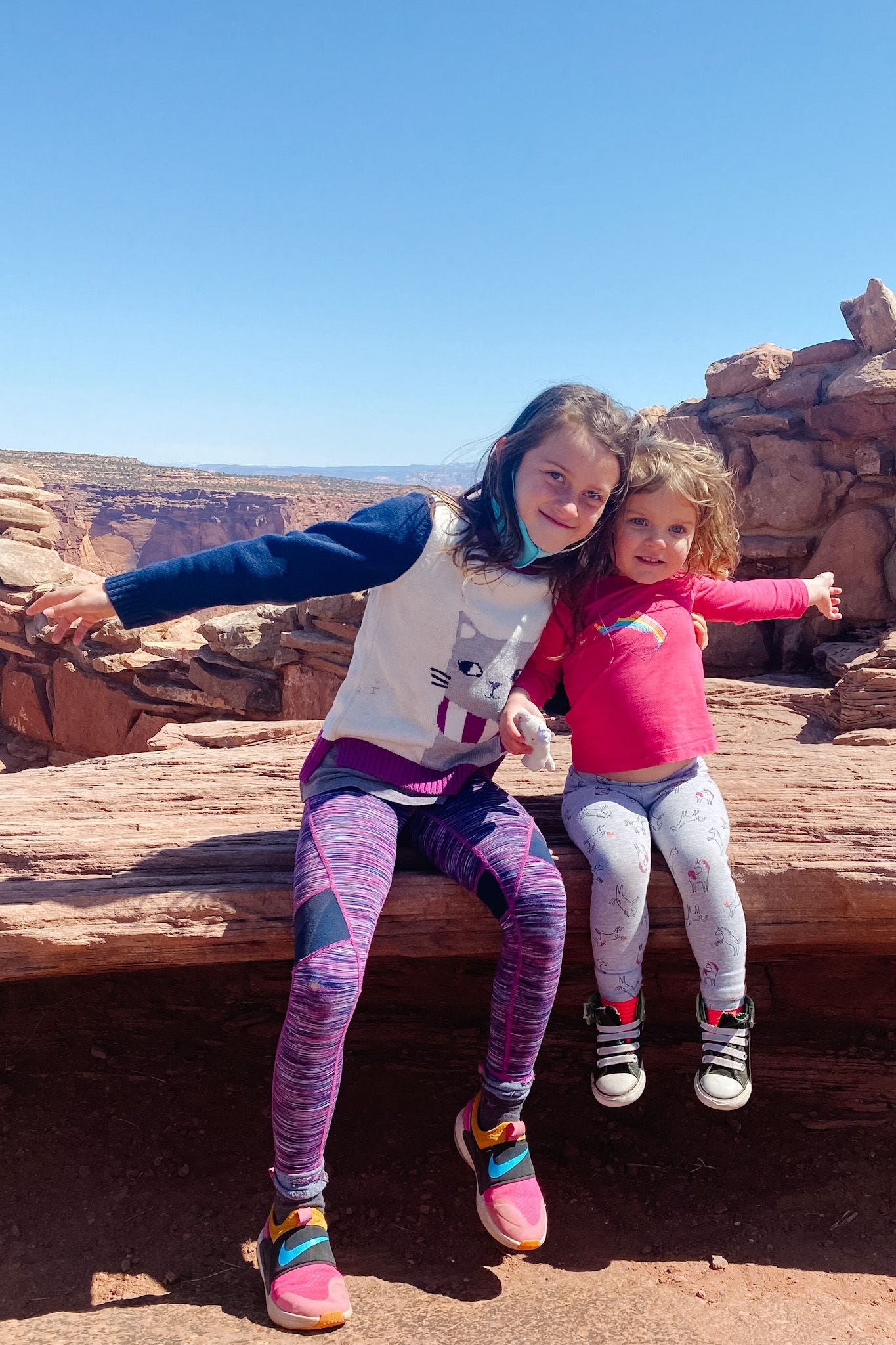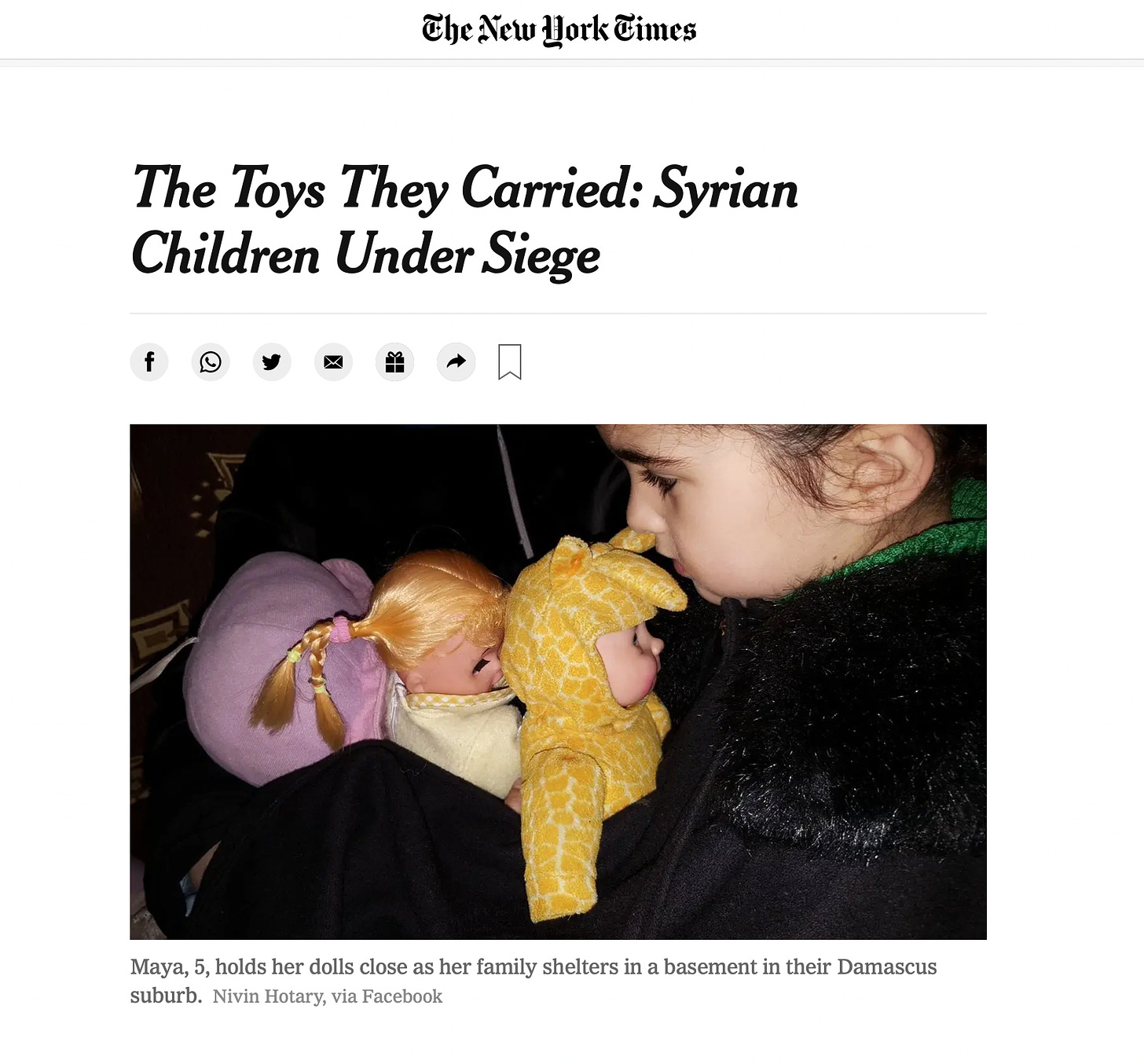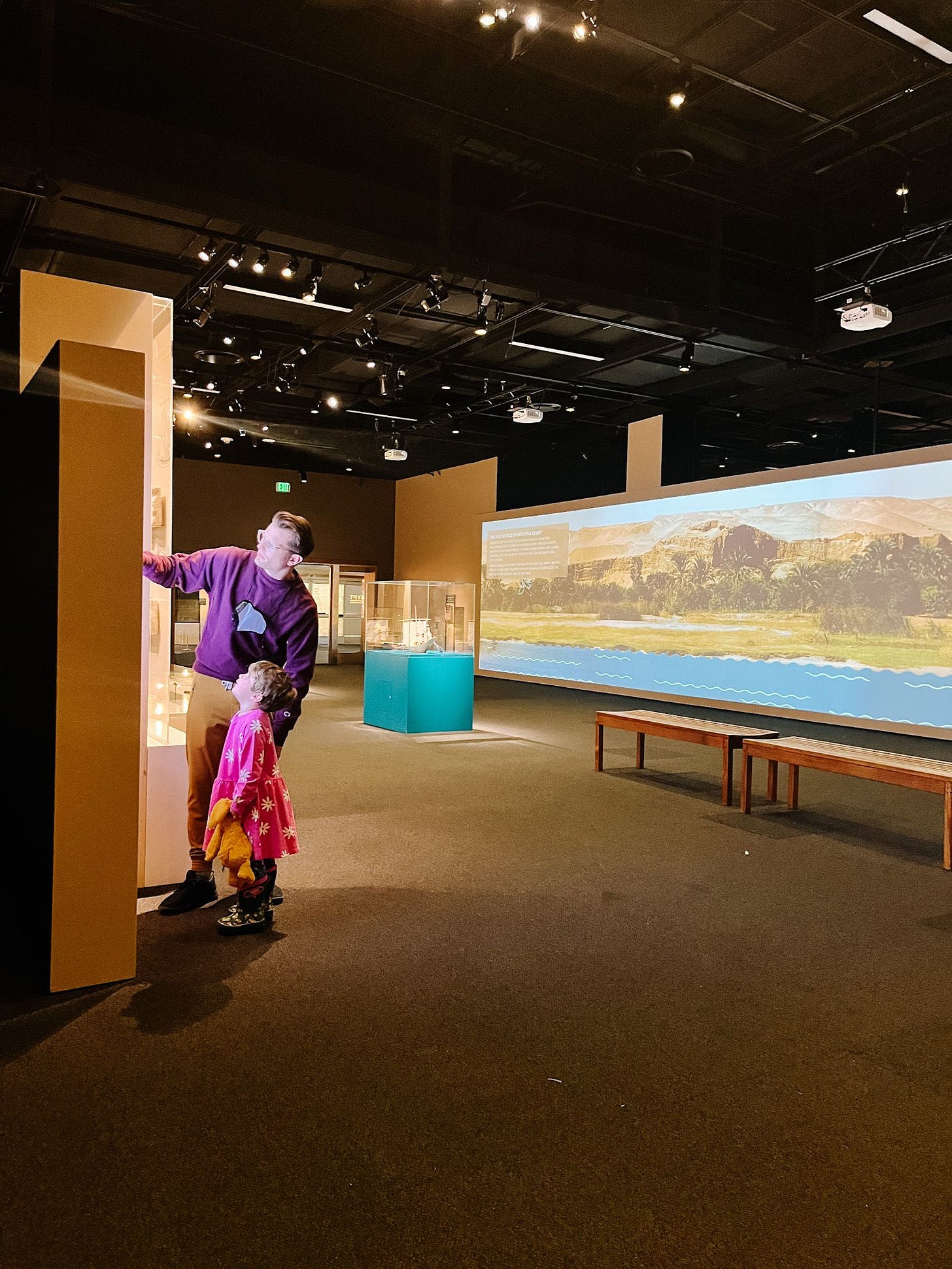I've been thinking about the things children leave behind. Children leave so much because they hold on to so much. My three daughters have all had toys that served as the most important pieces of their worlds. They carried them everywhere, every day. Stuffed animals, dolls and swirled marbles. Children are, well...children and so they often lose pieces of their worlds. It's hard to hold everything that's ever mattered in such tiny hands, I guess.
In our neighborhood, people who find something left behind by a child on the sidewalk, pick it up and put it on top of a fence post. Up there, it's protected from the snow or dirt. It's easier for frantic parents to see as they search. I go on a walk through my neighborhood every day. There's always a stuffed animal or baby blankie or baby shoe perched on a fence post. We've got a lot of kids leaving a lot behind here.
When my youngest daughter, Brontë, was two years old, she made a tiny stuffed bunny the biggest piece of her world. It was named Bunny. Bunny was about as big as my palm. I think it was originally a doll's toy. Brontë carried it everywhere for about 18 months.
If we'd been living in a non-pandemic world, that little stuffie might've been lost sooner than it was. But Brontë's world shrunk because of Covid-19. She only knew our home, her school and our neighborhood. Her world became small enough for us all to help keep track of Bunny. Mostly. We lost it a few times before we lost it for good, usually during long walks.

I'd be heaving the stroller up the steps to our house, thwack ... thwack...thwack. Then mid-heave, I'd hear Brontë say, "Where did Bunny go?" I'd feel a quick panic. And then we'd rush down the steps thwackthwackthwack. I'd retrace our steps, keeping my eyes up. I always found Bunny, sitting on a fence, waiting for us. The sweeping love I felt for the stranger who saw that tiny bunny and realized it was the most important thing in a world!
We did eventually lose Bunny somewhere in our house. It's only lost for now. We'll find it again. When we're moving or spring cleaning, in a year or twenty. Left behind the dryer or in the back of a drawer.
Kids don't always leave their toys behind on walks. Toys are not always so tiny they can get lost in a home. Sometimes they're left them behind because a child had to run from war, from abuse, from fire, from flood, from home. Often, parents leave behind family photographs and jewelry but help their kids scoop up a few of their stuffed animals. Parents do what they can to help their kids carry pieces of their world. In 2018, The New York Times published a story about the toys Syrian children carried with them as they hid from the missiles exploding in their neighborhood.

I once heard a reporter interview a child fleeing an armed conflict. A little girl. The reporter asked her if she'd left anything important behind in her room. I think about my own little girls' rooms. The stuffed animals lined up on their beds, the shelves cluttered with twigs, rocks, snow globes, ticket stubs and creatures made out of pipe cleaners. How would they answer that question in the same circumstance? I don't know if they could. The little girl couldn't really find an answer either. How could she? Everything is important when you're a child.
Just seven days into the Russian invasion, over half a million Ukrainian children had already become refugees. They all left behind so much. People, homes, and toys. The toys they left behind are just toys, I know. But I also know they matter.
After tiny Bunny was finally lost, Brontë mourned. Eventually, she let me give her a bigger bunny. She told me that this bunny is a girl named BunBun. I didn't ask how she knew. BunBun is kind of the platonic ideal of stuffed rabbits. Soft, floppy and saffron-hued. It's weighted just right, more stuffing where there should be more and less where there should be less. BunBun's long ears are firmly attached to her head, which is great because Brontë holds BunBun by her ears. And she holds her often. Brontë carries BunBun everywhere.
Someday, BunBun will be left behind. She's too big to go missing in our house like tiny Bunny. But she'll be misplaced in a motel room, forgotten by a public pool or dropped during a family hike through Colorado's red rocks. We'll call the motel, check the locker room at the pool or try to retrace our steps on the hike. If somehow, we manage to keep track of her, she'll still be left behind. Brontë will stop holding onto her. Children leave so much behind because they become adults who stop trying to hold everything.

She hasn't been left behind yet. BunBun went with us to the Denver Museum of Nature and Science last weekend. We were there to see a temporary exhibit about Ancient Egypt.
I watched Riley explain household amulets, irrigation and temple altars to Brontë, in a way she could understand. Brontë peered into one of the displays, wondering at the one tiny, perfectly carved hedgehog it contained. It was made in 1300 BC. "Dad, I think that would fit on my shelf next to my purple rock!" She desperately wanted to play with it. Somehow, she understood that before it was an artifact behind glass it was something someone held.
She clutched BunBun as we moved from the beginning of an ancient civilization to the end. Thousands of years represented by a few rooms that held a few bowls that once held grain, stone carvings that once held hope, a carved wall that once held up a roof. None of it was really treasure! Mostly everyday objects. Although, I guess those objects are treasure to me. I thought about the people who ate the grain, carved the stelae, slept under the roof. Babies and children and adults. And how they were just like us. And how their world ended. And ours will too.
There aren't very many toys in the prehistoric archaelogical record. For a long time, archaelogists thought that was because prehistoric kids were somehow fundamentally different from modern kids. But now some scholars think that the toys are missing from the record simply because early archaeologists didn't recognize them. Whenever they saw objects that could easily be used for children's play, they categorized them as items used for ritual instead.
There's a great paper on this in a 2018 issue of Current Anthropology titled, "Is It Ritual? Or Is It Children?" Early archeologists would come across a playhouse or a pile of dolls at a dig site. Where I would see a group of kids playing house, they saw adults performing rites. I think childhood play is sacred, so I kind of appreciate the mix up. But I also wonder at it. Yes, concepts of childhood change from era to ear. But a four year old four thousand years ago is still a four year old. Of course, they'd play. Of course, they'd have some sort of play object. Of course, they'd leave it behind. Did they leave it behind because of war? Because of the migration of a herd? Because they grew up? Did their parents feel frantic too? (Of course, they did.)
And here, if I can be honest, I guess I am not just thinking about the things children leave behind. I said adults stop trying to hold everything, but I never did. I still sleep with my baby blanket. I've carried it from my childhood home to college dorms to house to home to home. And when I fret about kids leaving pieces of their world behind, I think I am really fretting about the three most important pieces of my own world. I am mourning because someday I'll leave behind the three girls I carry with me everywhere. It doesn't matter how hard I hold on, we're mortal and so eventually all of our hands fall open.
My own dad's holding-on hands fell open when I was in my twenties. I know when a parent leaves a child behind, it's the child who feels they lost something. I've felt frantic as I've searched. But when it's my turn to have to let go, I think I'll feel like I lost something too. I wish finding the people who've left us behind was as simple as retracing our steps and keeping our eyes up. Still, maybe there's something there. I believe in the sweeping love of a Stranger who picks up the people we've lost and places them somewhere high. I suppose we just keep our eyes up, someday we'll see them waiting for us.
When I started this essay, I thought I was writing about lost stuffies, but I guess I was writing about God. Maybe I'm just like those early archaelogoists, I can't tell the difference between ritual and play. I think that's all right.
Maybe in 500 or 1000 years, Brontë’s BunBun will sit behind glass in a museum exhibit about our own world that’s long-gone. The plaque next to it might read, Stuffed bunny, made between 2010 - 2050. Found in a Colorado cave. Perhaps it was dropped outside by a child on a family hike and then carried into the cave’s interior by an animal. This extraordinarily well-preserved toy is an example of mass produced goods common to this era. Made in China for a company in England, it was brought to North America through a series of globalized trade routes.
If my daughter’s bunny is ever behind that glass? I hope it’s seen by a little girl, one the age Brontë is now. Too young to read but not too young to wonder. And while her parent reads her the plaque, I hope she peers in through the glass and sees what really matters about this everyday object…it was held and loved by an everyday girl, and she was held and loved too.

